Although Reservoir Watches has been around since 2015, my first experience with the brand was at Baselworld 2018 where I was struck by the brand’s all-or-nothing approach to watchmaking. Every single timepiece produced by Reservoir is focused on a dueling complication setup for the time display. The hours are indicated via a digital aperture in the lower hemisphere of the dial that physically “jumps” when the minute hand strikes 60. The minutes are read courtesy of a retrograde display that stretches around the periphery of the upper two-thirds of the dial. A power reserve display is located directly underneath the hour window at the bottom of each dial that uses either a hand or a sequence of three-dimensional spheres to indicate how much autonomy is left. In some models, a date window is placed to the right of the power reserve.
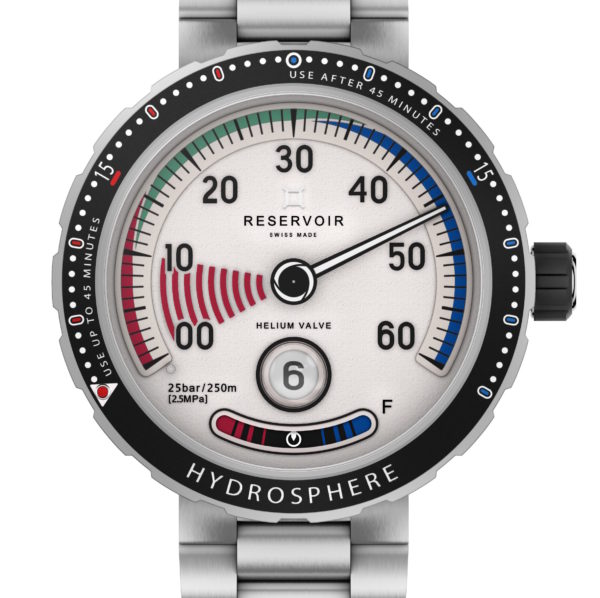
This dial layout, meant to recall dashboard instruments and gauges, is consistent throughout all of Reservoir’s various collections that lean on either automotive, avionic, or nautical motifs to stand out. The car-inspired designs are the most prevalent and come in three different subcollections: Longbridge, GT Tour, and Supercharged. The airplane-influenced models are split into either the Airfight or the Airfight Jet, and the nautical-enhanced models lean on a submarine style in the Tiefenmesser and Tiefenmesser SH ranges. These three styles make sense and each fits a different sort of crossover appeal for enthusiasts and hobbyists alike.
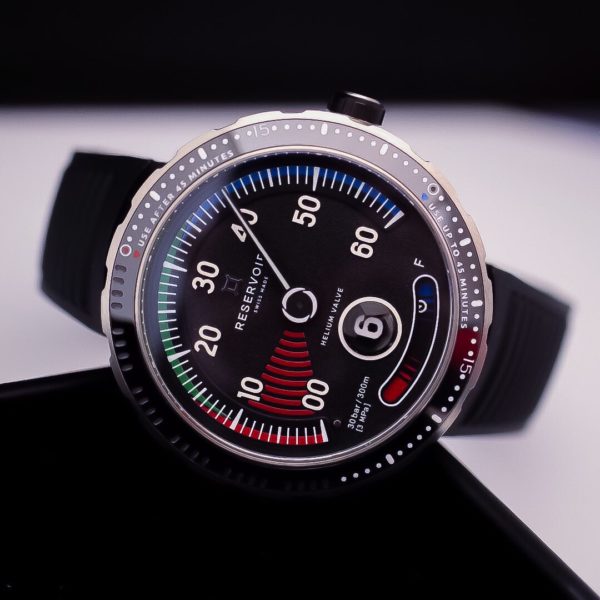
Going into this year’s Basel fair, I didn’t have much reason to believe that Reservoir would divert from this identity anytime soon. After all, the brand is a young independent on the rise that has to balance communicating its horological approach to the general audience while maintaining its distribution method and growing overall production. I assumed we’d see a new case material in the GPHG-nominated Longbridge collection (which we did) and perhaps the expansion of the Tiefenmesser range (which we didn’t). What I didn’t expect was for the brand to launch an entirely new collection of watches that is a complete departure from what the brand has previously done while still maintaining that core jump hour/retrograde minute/gauge focused identity.
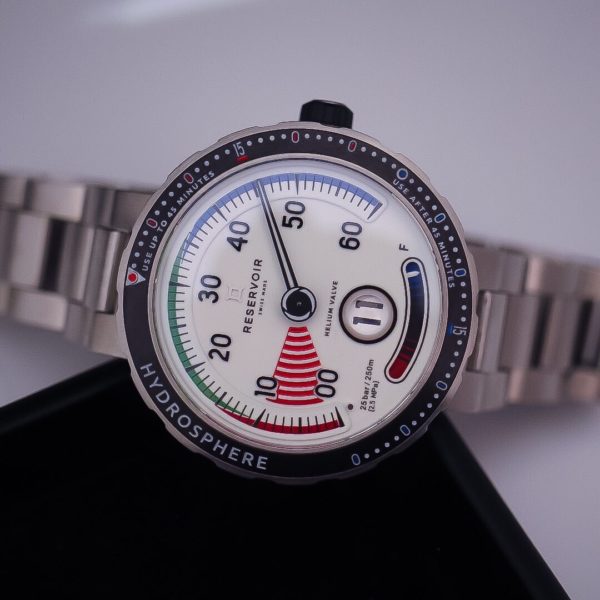
Consisting of three colorful models with equally colorful names (Blue Hole, Blackfin, and Air Gauge), the new Hydrosphere collection is the brand’s first attempt at a legit dive watch and it’s a pretty impressive first go around. The watch still uses the same dial layout with a retrograde minute hand stretching over the upper two-thirds of the dial, a jump hour situated underneath the central axis, and a neat power reserve display that transitions using a satellite indication from red (needs power) to blue (full steam ahead). While the models in blue and black are attractive and funky in their own right, the white dial really stands out as its entirely coated in luminescent material. Just for that reason, I expect it to be the top seller for the brand even if the white dial is slightly less traditional for dive watch fanatics as a whole.

Handling the Hydrosphere, it’s clear that a lot of work went into translating the brand’s design language to a potent diver. The watches are fully specced out with a water resistance rating up to 250 meters and a helium valve just in case you ever decide to take up saturation diving, or, more likely, for professional purposes. The chunky 45-mm case is built from 316L stainless steel and features a brushed finish. Somewhat interestingly, the case design is entirely lug free with the three-link stainless steel bracelet and rubber strap options (the watch comes with both) screwed into the caseback. The screw-down crown is coated in rubber.
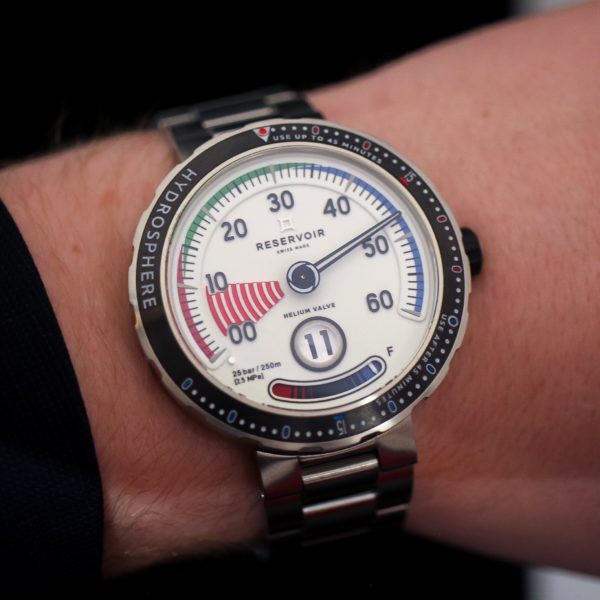
Surrounding the watch is the unidirectional bezel that is made of ceramic. Since the time indication on the watch is limited to the upper periphery of the dial, Reservoir has equipped its bezel with minute hashes that go around the bezel in that exact limitation. In fact, the bezel features two 15-minute indicators (a so-called double scale) because of this so you read the dive stop time before and after the return of the retrograde hand.
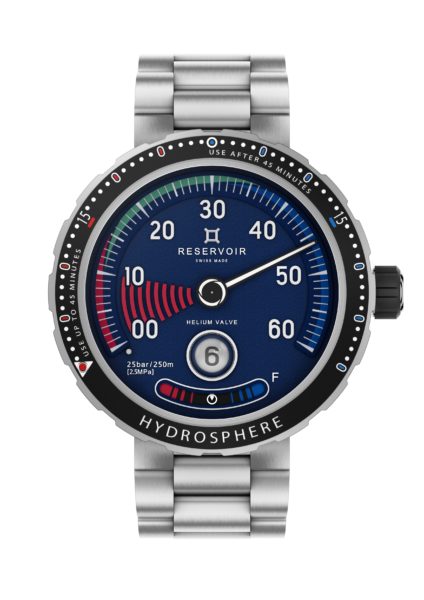
Just as with all other Reservoir timepieces, there is no seconds hand, but Reservoir knew that if their dive watch was going to be used for, you know, actual diving, then their combination of retrograde minute and jump hour might be nervewracking for divers that need to ensure their watch is consistently running at a glance. To do this, the brand placed a rotating ring on the central axis that is in constant rotation. It doesn’t necessarily indicate time, but it makes a full rotation once a second and ensures that the watch is functioning properly. This choice also offers an additional dash of kinetic intrigue to the normal wait-and-see identity of the jump hour/retrograde minute design.
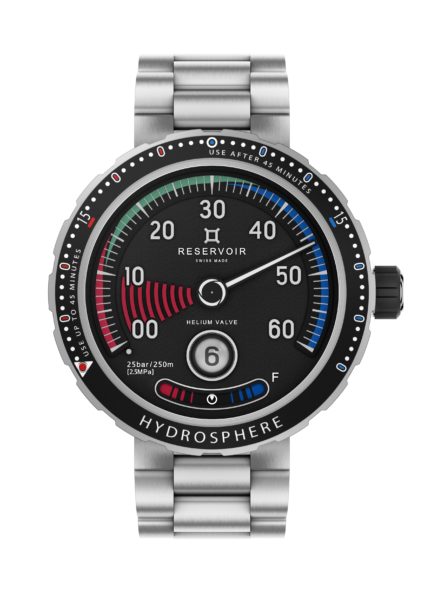
The movement used within the Hydrosphere models is the same caliber that can be found in every single Reservoir timepiece produced thus far. It’s an ETA 2824-2, a robust option if there ever was one, that has been modified with a 124-piece module developed by the manufacturing firm Télôs exclusively for Reservoir. It offers up approximately 37 hours of running autonomy. The module also offers some additional protection through a special clutch that protects the movement from damage just in case the crown is set in the wrong direction and the minute hand pushed past the zero marker. Although the watches are conceptualized in the heart of Paris where the founders are based, they are all hand assembled in La Chaux-de-Fonds, Switzerland.
Reservoir’s horological approach might seem limited in its appeal with its dueling construction, but it actually fulfills a niche that has been long ingrained in wristwatch history and was once the domain of prestigious marques like Gérald Genta, Caravelle, and Enicar. In my opinion, the Reservoir Hydrosphere is an impressive statement towards the ingenuity of Reservoir’s team and a damn fun weekend watch for the desk divers among us. It takes the jump hour/retrograde minute design (which could be passed off as a gimmick by some) and propels it forward rather than looking into the past for inspiration.
All three Reservoir Hydrosphere models are priced at $4,300 and will be available to purchase this summer. You’ll be able to go hands-on with them at our upcoming WatchTime Los Angeles show on May 3-4 at Hudson Loft in Downtown LA. Click here to get your tickets!
Keep an eye out for a review of the airplane-inspired Reservoir Airfight Jet in the May/June print issue of WatchTime magazine.


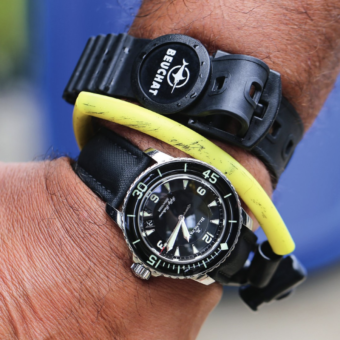
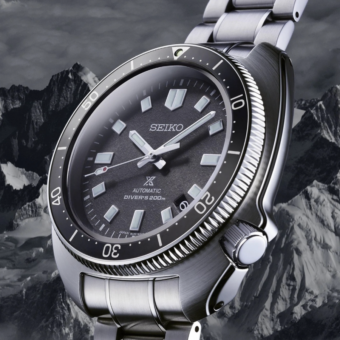
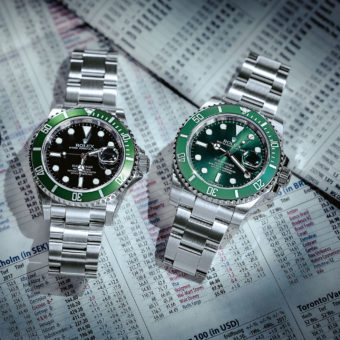
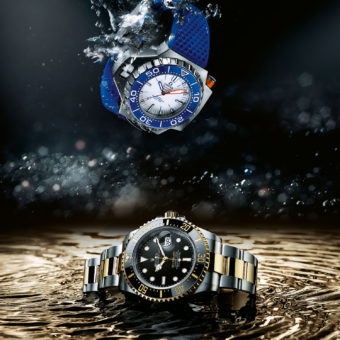
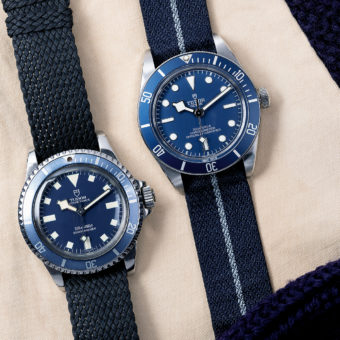
I’d buy this just to look at this at night in my dark room
Unique and interesting. I’ll probably purchase one if I find one to see and try first in person. I’m glad they make these to add to the universe of interesting watches.
With no disrespect, does this “watch” show you the time of day?
Butt ugly